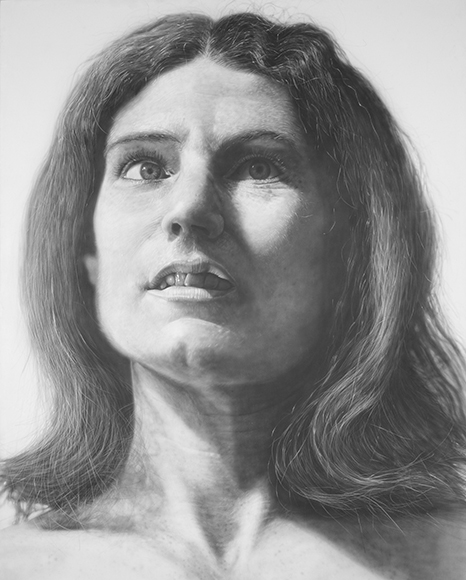Nancy
Chuck Close (born 1940)
Acrylic on canvas, 1968

Milwaukee Art Museum; gift of Herbert H. Kohl Charities, Inc. (M1983.207) © Chuck Close/Courtesy Pace Gallery Photograph by Larry Sanders
In 1968, Chuck Close, frustrated with his abstract painting and wanting to make a “big, aggressive, confrontational, knock-your-socks-off image,” started painting monumental heads like this image of Nancy Graves (1939–1995). Trying to avoid all art historical precedent, he transferred gridded photographs to a large canvas and painted each exaggerated detail unit by unit, without hierarchical emphasis on any one feature or area. Close’s Nancy was one of a series of dramatically large, monochromatic paintings based on photographs, with a shallow depth of field and an ambiguous expression. The enormous “heads,” as Close called them, assault the viewer with a terrifying magnification of detail. The eye struggles to integrate so much closely observed information and absorb the humanity of the giant face. Close found a timelessness in the photographic detail, however; while detached and distant, images like Nancy represented for him “a frozen, poemlike moment in time.”

